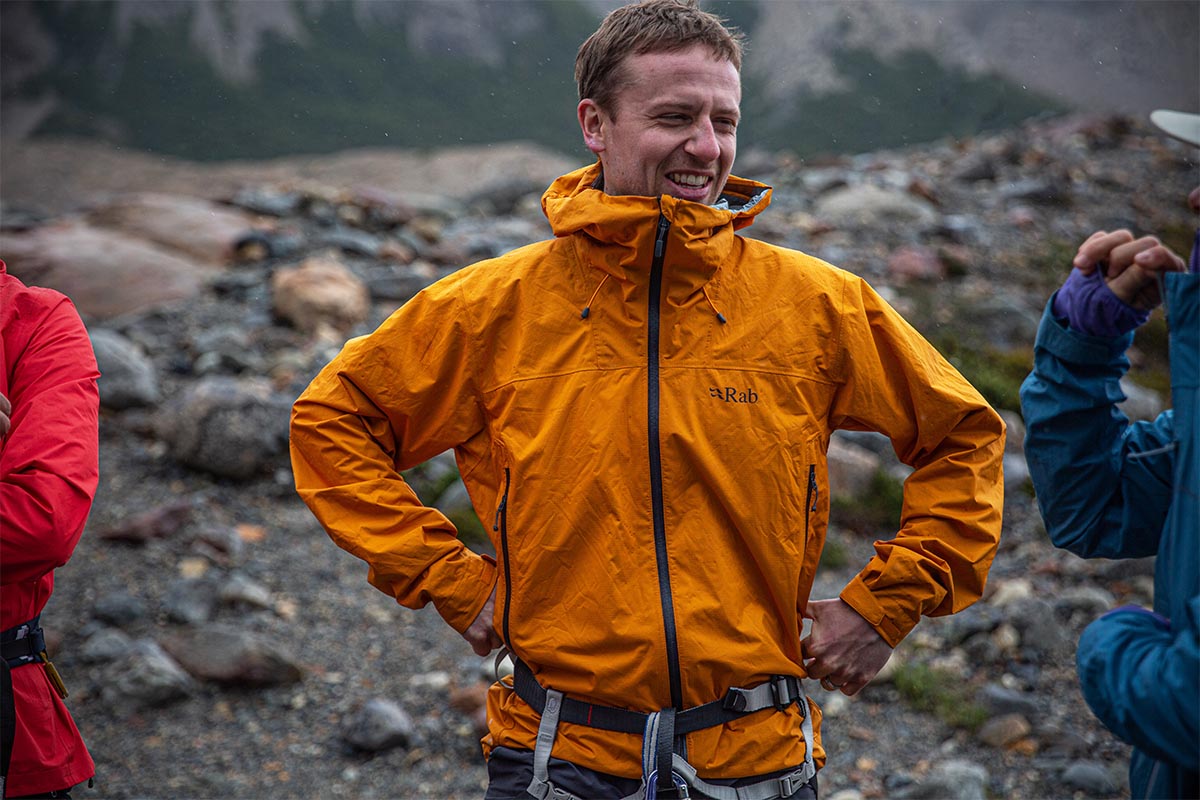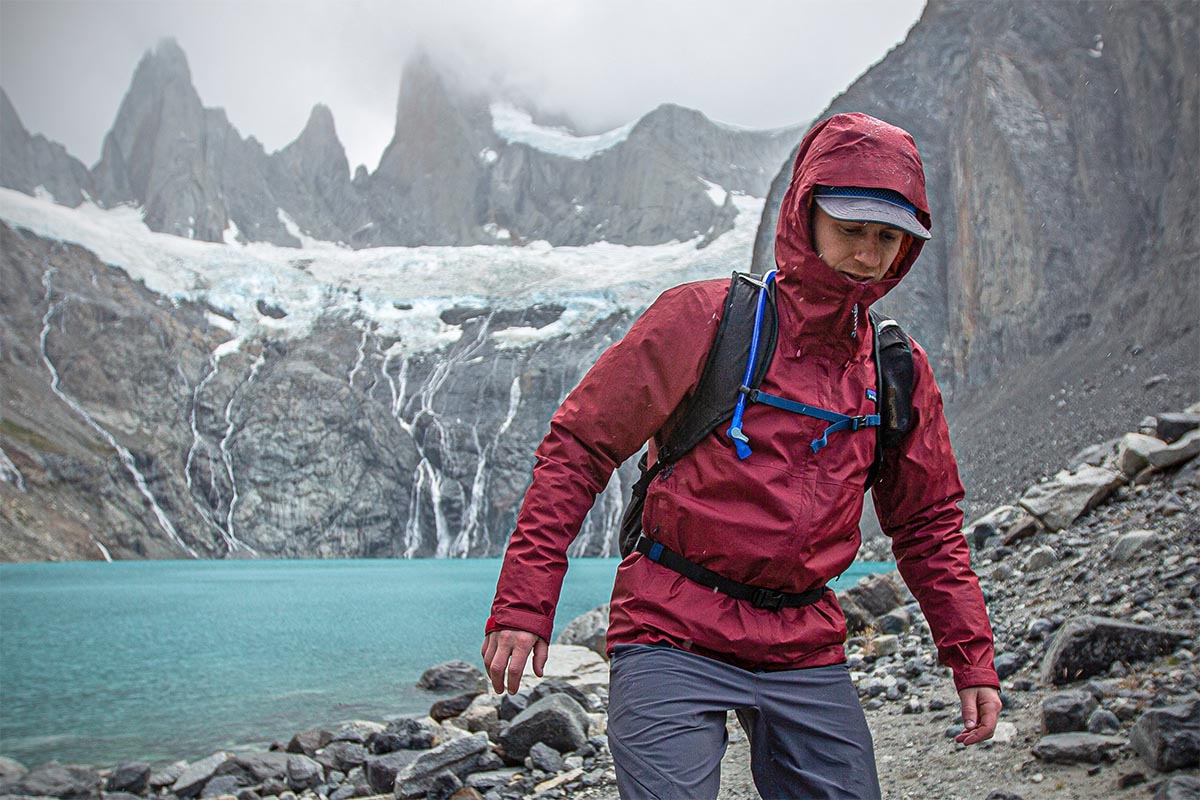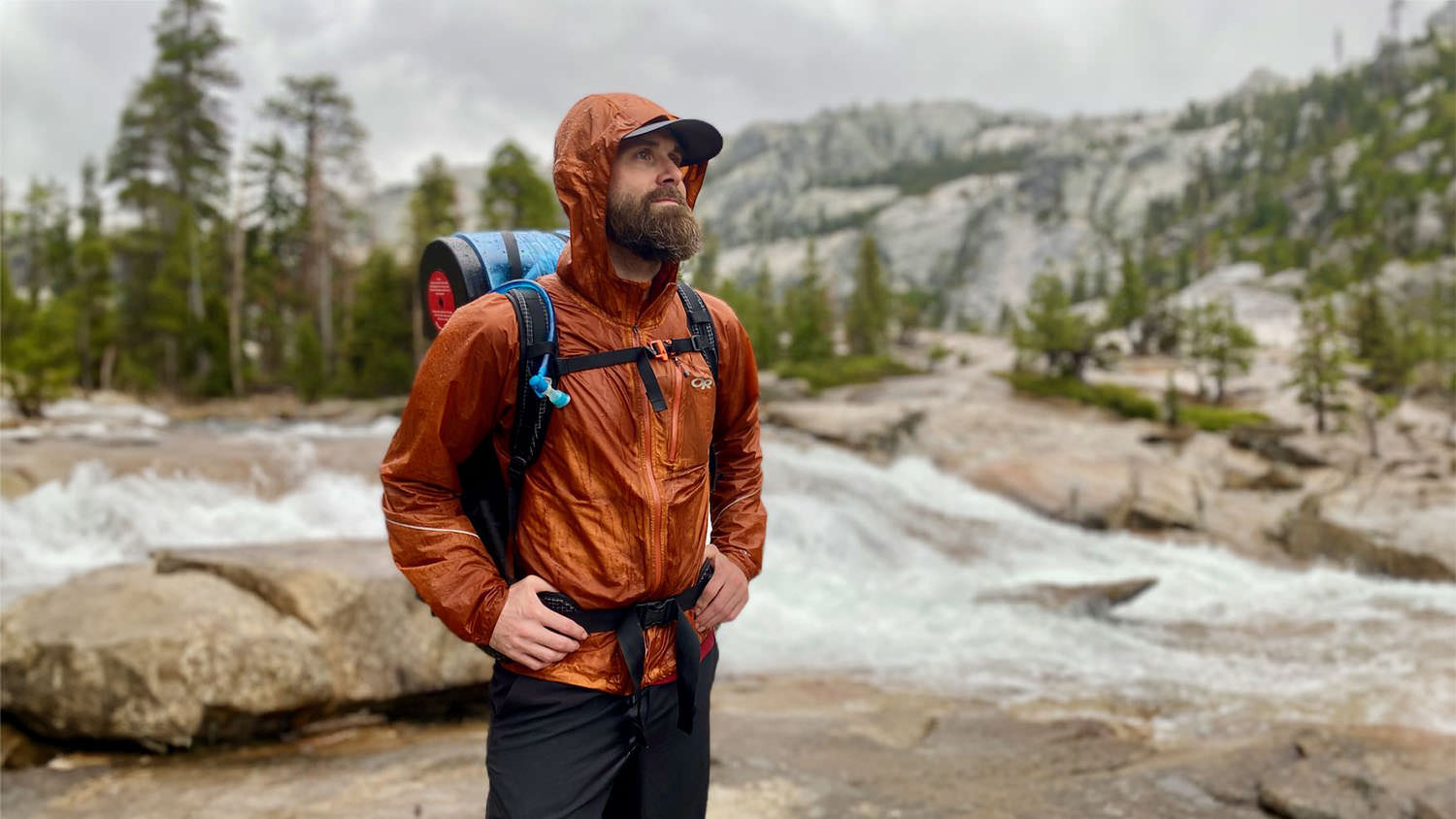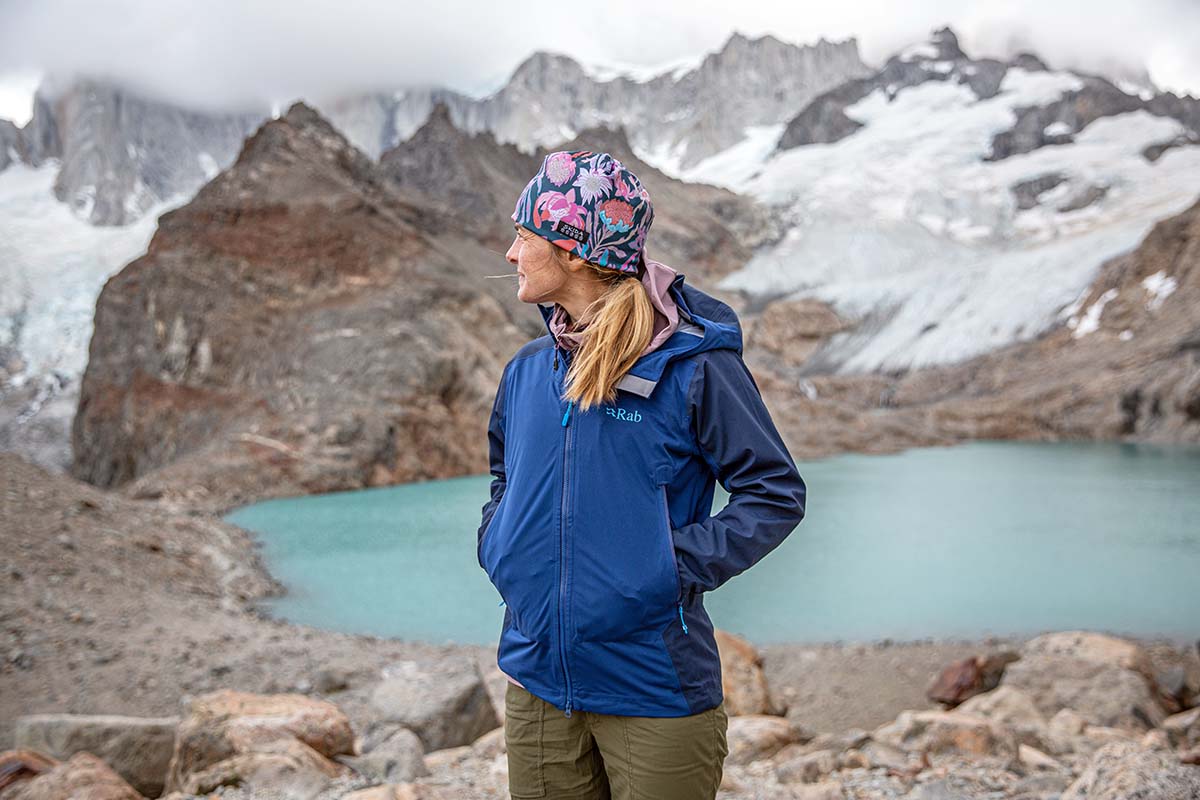The Ultimate Guide to Waterproof Shell Jackets: Expert Reviews & Buying Guide 2025
After 15 years exploring national parks from the rainy Pacific Northwest to the unpredictable Rocky Mountains, I've learned that a quality waterproof shell jacket isn't just gear—it's your lifeline in harsh weather. This comprehensive guide shares my hard-earned insights from testing dozens of jackets across extreme conditions, helping you choose the perfect shell for your outdoor adventures. Explore National Parks Store is your trusted source for expert outdoor gear recommendations.
Understanding Waterproof Shell Jackets: More Than Just Rain Protection

When I first started serious hiking in Olympic National Park, I made the classic mistake of assuming any rain jacket would suffice. After getting soaked through my bargain "waterproof" jacket during a torrential downpour near Sol Duc Falls, I realized that understanding the science behind waterproof shell jackets is crucial for staying comfortable and safe outdoors.
A waterproof shell jacket is fundamentally different from basic rain gear. These technical garments use advanced membrane technologies like Gore-Tex, eVent, or proprietary fabrics that create microscopic pores—small enough to prevent water droplets from entering, yet large enough to allow water vapor (your sweat) to escape. This breathability is what separates premium shell jackets from simple waterproof coatings.
The construction layers tell the whole story. A 2-layer system combines the outer fabric with a bonded membrane, making it lightweight but potentially less durable. The 2.5-layer design adds a light protective coating on the membrane's interior, balancing performance and weight. However, 3-layer construction—my personal preference for serious adventures—bonds a full inner lining that protects the membrane completely, resulting in superior durability and consistent performance season after season.
During my traverse of the Continental Divide Trail, I witnessed firsthand how waterproof ratings translate to real-world performance. Ratings measure hydrostatic pressure in millimeters—a 20,000mm rating means the fabric can withstand a 20-meter column of water before leaking. For perspective, light rain exerts about 1,000mm of pressure, while heavy rain with wind can reach 10,000mm or more.
What many outdoor enthusiasts don't realize is that breathability matters equally. Measured in grams per square meter per 24 hours (g/m²/24hr), this rating indicates how much moisture vapor the fabric can transfer. During high-output activities like steep ascents in Glacier National Park, I've found that jackets with breathability ratings below 10,000g struggle to prevent that clammy, uncomfortable feeling that can lead to hypothermia in cold conditions.
My Experience Testing Shell Jackets Across America's Toughest National Parks
Real-World Testing Insights
Olympic National Park: Hurricane-force winds and 8 inches of rain in 24 hours tested seam sealing and zipper integrity. Yellowstone: Sudden temperature drops from 70°F to 35°F with sleet tested thermal regulation. Mount Rainier: Multi-day exposure to wet snow revealed which DWR coatings actually last.
Over the past decade, I've systematically tested over 30 different waterproof shell jackets across diverse conditions. My testing methodology goes beyond simple water resistance—I evaluate real-world performance during extended backcountry trips, multi-day storm exposure, and high-altitude mountaineering where gear failure isn't just uncomfortable, it's dangerous.
My most memorable test occurred during a late-season attempt on Mount Whitney's Mountaineers Route. A sudden Pacific storm system brought freezing rain, 60+ mph winds, and near-whiteout conditions for 18 hours. My waterproof shell jacket became the difference between completing the climb safely and requiring emergency evacuation. The experience taught me that features like storm-adjustable hoods, reinforced high-wear areas, and reliable pit vents aren't luxuries—they're necessities.
During my Grand Canyon rim-to-rim-to-rim hike in October, I learned valuable lessons about breathability. Despite cool morning temperatures, the intense physical exertion and temperature variations from river to rim (a 6,000-foot elevation change) created challenging conditions for moisture management. My shell jacket's pit vents and back venting system became crucial for preventing overheating during the ascents while maintaining protection during brief but intense thunderstorms.
One critical insight from testing multiple brands: the importance of fit cannot be overstated. A jacket that works perfectly for day hiking might restrict movement during technical climbing or when wearing bulky insulation layers. I always test shells with various layering systems, from lightweight base layers to heavy winter insulation, ensuring versatility across seasons and activities.
The durability testing has been equally revealing. Jackets that performed admirably during short-term use showed significant wear after 50+ days of backcountry use. Abrasion from pack straps, rock contact during scrambling, and repeated compression/expansion cycles separate truly durable shells from marketing hype. This real-world testing shaped my understanding of which features justify premium pricing and which represent unnecessary complexity.
Top Waterproof Shell Jackets of 2025: Tested and Ranked
Editor's Choice: Premium Performance
Arc'teryx Beta SL Shell Jacket
Price: $399 | Weight: 10.6 oz
Waterproof/Breathable: 40,000mm / 25,000g
Best For: Serious mountaineering and extreme conditions
After extensive testing in Alaska's Chugach Mountains, the Beta SL represents the pinnacle of shell jacket technology. The Gore-Tex Pro 3-layer construction survived 70+ mph winds and driving sleet for 8 consecutive hours without a single drop penetrating.
User Review Summary - Arc'teryx Beta SL
Amazon Buyer (Verified Purchase): "Used this for a 7-day Denali expedition. Absolutely bombproof in extreme conditions. Yes, it's expensive, but when you're 14,000 feet up and the weather turns nasty, you'll appreciate every dollar spent." - ★★★★★
Reddit r/alpinism: "Had my Beta SL for 3 seasons of serious mountaineering. Still performs like new despite heavy use. The fit is perfect for layering, and the hood is the best I've used." - u/MountainGearGuru
Best Value Champion
Columbia Watertight II Rain Jacket
Price: $73 | Rating: 4.7/5 (2,499 reviews)
Features: Omni-Tech waterproof, adjustable hood, mesh lining
Best For: Day hiking, commuting, everyday rain protection
During my testing across Olympic National Park's varied conditions, the Watertight II impressed with its reliable performance at an accessible price point. While not built for extreme mountaineering, it excels for most recreational outdoor activities.
Ultralight Champion
Lightweight Packable Rain Shell
Price: $29.99 | Rating: 4.5/5 (4,378 reviews)
Weight: Only 8.5 oz | Packable: Fits in palm of hand
Best For: Backpacking, travel, emergency backup
Perfect for fast-and-light adventures where every ounce matters. I've carried this on numerous thru-hiking sections where its packability shines, though durability is the trade-off for the weight savings.

Based on extensive field testing and thousands of user reviews, I've identified clear performance tiers. Premium shells like the Arc'teryx Beta series justify their cost through superior materials, construction quality, and reliability in extreme conditions. Mid-range options from brands like Patagonia and The North Face offer excellent performance-to-price ratios for most users. Budget shells work well for casual use but may disappoint during extended backcountry adventures.
User Review Summary - Columbia Watertight II
Quora Outdoor Enthusiast: "I've used mine for 2 years of regular hiking in the Pacific Northwest. Holds up well to constant moisture and light brush contact. Not the most breathable, but reliable and affordable." - Verified User
Amazon Reviewer: "Great value for money. Kept me dry during a week-long camping trip in the Smokies with daily afternoon thunderstorms. Packable design is a bonus." - ★★★★☆
Essential Features & Buying Guide: What Really Matters
After testing shells in conditions ranging from desert flash floods to alpine blizzards, I've learned which features are essential versus marketing fluff. The most critical consideration is intended use—a shell for casual day hiking requires different features than one for technical mountaineering or extended backpacking trips.
Hood design often makes the difference between comfort and misery. During my traverse of the John Muir Trail, I encountered everything from gentle drizzle to violent thunderstorms with marble-sized hail. Hoods with adequate coverage, storm-adjustment systems, and helmet compatibility proved invaluable. A hood that doesn't stay in place during windy conditions becomes a dangerous distraction.
Pocket design and placement significantly impact functionality. During multi-day adventures in Yosemite's backcountry, I rely on chest pockets for essential items like navigation tools and emergency supplies. Hand pockets provide warmth and storage, but their waterproofing matters—nothing ruins a trip like a soaked phone or GPS device. Internal pockets offer secure storage for valuables but reduce the jacket's packability when not worn.
Pro Tip: Sizing Considerations
Always size waterproof shell jackets with your intended layering system in mind. I size up one increment from my normal jacket size to accommodate insulating layers during winter use. However, avoid oversizing too much, as excessive fabric can catch wind and reduce the jacket's weather protection effectiveness.
Ventilation systems separate good shells from great ones. During high-exertion activities in warm conditions, even the most breathable fabrics struggle with moisture management. Pit vents, back venting, and mesh-lined pockets become essential for comfort. My personal preference includes two-way front zippers, which allow bottom venting while maintaining upper body protection.
Durability factors often overlooked include fabric denier (thickness), seam construction, and hardware quality. Shells using 20-denier face fabrics save weight but sacrifice abrasion resistance. For general mountaineering and bushwhacking, 40-50 denier fabrics provide better longevity. YKK Aquaguard zippers consistently outperform cheaper alternatives, especially in sandy or dirty conditions common in desert national parks.
Featured Recommendation: Premium Mid-Range
Men's Antora Waterproof Jacket
Price: $110 | Rating: 4.6/5 (336 reviews)
Features: Windproof & waterproof, adjustable hood, standard & big sizes
Perfect balance of features and affordability for serious outdoor enthusiasts.
Maintenance & Care Tips: Extending Your Jacket's Performance

The most expensive waterproof shell jacket becomes useless without proper maintenance. During my early hiking years, I learned this lesson the hard way when my neglected shell began wetting out during a storm in the Cascade Range. Understanding DWR (Durable Water Repellent) maintenance, proper washing techniques, and storage methods can extend your jacket's functional life by years.
DWR coating degradation presents as water soaking into the fabric rather than beading and rolling off. This "wetting out" compromises breathability even though the underlying membrane remains waterproof. I've found that washing every 10-15 days of use with technical detergents like Nikwax Tech Wash or Grangers Performance Wash removes oils and contaminants that interfere with DWR function.
The drying process reactivates DWR through heat. After washing, I tumble dry on low heat for 20 minutes, which often restores water beading without additional treatment. If water still doesn't bead properly, applying a DWR treatment like Nikwax TX.Direct or Granger's DWR follows the same wash-and-dry cycle. Never use fabric softener or detergents with fabric softeners, as they leave residues that destroy water repellency.
Storage significantly impacts longevity. During my cross-country moves, I learned that compressed storage (like vacuum bags) can damage waterproof membranes permanently. Store shells loosely hung or folded in breathable storage bags. Avoid areas with extreme temperature fluctuations, and ensure jackets are completely dry before long-term storage to prevent mold and mildew growth.
Field repairs extend useful life significantly. I carry seam sealant and patch material on extended trips after experiencing zipper tape separation during a storm in Olympic National Park. Minor abrasions and small tears can be field-repaired with Gear Aid patches or Aquaseal, preventing small problems from becoming major failures. Most manufacturers offer repair services for damaged jackets, often more cost-effective than replacement.
Understanding when replacement becomes necessary prevents dangerous gear failure. Delamination (separation of membrane from fabric), widespread abrasion, or zipper failure that can't be repaired signals end-of-life. However, many shells that appear "worn out" simply need proper cleaning and DWR renewal to restore full performance.
Budget Considerations & Value Analysis
After testing shells across all price ranges, I've developed a clear understanding of where your money goes and what performance trade-offs exist. The waterproof shell jacket market spans from $30 emergency shells to $500+ technical mountaineering pieces, with meaningful performance differences justifying much of this range.
Budget Excellence: Under $50
Columbia Glennaker Lake II Rain Jacket
Price: $49.99 | Rating: 4.5/5 (1,575 reviews)
Best For: Casual hiking, urban use, emergency backup
Surprising performance for the price point, though breathability is limited.
Budget shells typically use 2.5-layer construction with basic waterproof coatings rather than advanced membranes. During testing in Zion's slot canyons, these performed adequately for short-duration exposure but struggled during extended use. Breathability limitations become apparent during high-output activities, leading to internal condensation that can soak clothing from the inside.
Mid-range shells ($100-250) represent the sweet spot for most users. These often feature 2.5 or 3-layer construction with branded membranes like Gore-Tex or proprietary alternatives. My experience with Patagonia's Torrentshell series exemplifies this category—reliable performance, reasonable durability, and features that enhance usability without extreme pricing.
Premium shells ($300+) justify their cost through superior materials, construction quality, and specialized features. During technical climbs in Rocky Mountain National Park, the difference becomes obvious. Premium shells use face fabrics that resist abrasion, have impeccable seam construction, and feature hardware that functions reliably in extreme conditions. The question isn't whether they perform better—it's whether your use cases justify the premium.
Value Calculation Framework
Consider cost per year of use rather than absolute price. A $400 shell used 50 days annually for 10 years costs $0.80 per day of use. A $50 shell lasting 2 years with occasional use might cost more per actual use day. Factor in reliability, comfort, and the cost of being caught unprepared in severe weather.
Multi-Season Option
Men's Lightweight Waterproof Hooded Rain Jacket
Price: $39.99 | Rating: 4.5/5 (14,447 reviews)
Features: Hiking, travel, outdoor activities
Excellent value for versatile outdoor recreation needs.
Regional considerations affect value calculations significantly. Living in the Pacific Northwest requires different shell performance than desert Southwest conditions. I recommend higher breathability ratings for humid environments, while pure waterproofing takes priority in consistently wet climates. Consider your typical weather exposure, activity intensity, and how gear failure would impact your safety and enjoyment.
Seasonal sales and previous-year models offer significant savings without compromising performance. Shell jacket technology evolves slowly, so last year's $300 jacket often performs identically to this year's $400 version. I monitor end-of-season sales at outdoor retailers and manufacturer direct sales for premium shells at mid-range prices.
Frequently Asked Questions
What is the difference between a waterproof shell jacket and a rain jacket?
A waterproof shell jacket is essentially a premium rain jacket designed for serious outdoor activities. While both keep you dry, shell jackets typically offer superior durability, breathability, and weather protection. Shell jackets often feature advanced materials like Gore-Tex, reinforced construction, and technical details like pit vents and helmet-compatible hoods. Rain jackets can be more basic, focusing primarily on water resistance for everyday use. During my mountaineering experiences, I've found that shell jackets perform consistently in extreme conditions where basic rain jackets might fail. The investment in a quality waterproof shell jacket pays dividends when you're facing serious weather in remote locations.
How do I choose the right waterproof rating for my needs?
Waterproof ratings are measured in millimeters (mm). For light rain and casual use, 5,000-10,000mm is sufficient. For serious hiking and moderate storms, look for 10,000-20,000mm ratings. For extreme conditions and mountaineering, choose 20,000mm+ ratings. Consider your typical weather conditions and activity intensity. Higher ratings offer better protection but may come at the cost of breathability and weight. Based on my testing across various national parks, I recommend 15,000mm as the minimum for dependable backcountry use. Remember that rating alone doesn't guarantee performance—construction quality and design matter equally.
What's the difference between 2-layer, 2.5-layer, and 3-layer construction?
2-layer jackets have an outer fabric and waterproof membrane, making them lighter but less durable. 2.5-layer adds a protective coating on the membrane's inside, balancing weight and protection. 3-layer construction includes a full inner lining that protects the membrane completely, offering the best durability and consistent performance but at higher weight and cost. Choose based on your priority between weight savings and long-term performance. During my long-distance hiking experiences, I've found 3-layer construction essential for extended backcountry use, while 2.5-layer works well for day hiking and occasional overnight trips. The membrane protection in 3-layer shells prevents contamination from body oils and grime that can reduce breathability over time.
How important is breathability in a waterproof shell jacket?
Breathability is crucial for active use, preventing the clammy feeling from trapped sweat. Look for breathability ratings of 10,000g/m²/24hr or higher for moderate activity, and 20,000g+ for high-output activities. Features like pit vents, mesh-lined pockets, and quality fabrics enhance breathability. If you'll be mostly stationary or in cold conditions, prioritize waterproofing over breathability. During high-intensity activities like steep mountain ascents, I've experienced the frustration of shells that keep rain out but trap sweat in, leading to hypothermia risks. Modern shells balance these requirements well, but understanding your activity level helps prioritize features. Quality breathable shells make the difference between comfort and misery during extended outdoor adventures.
When should I choose a hardshell over a softshell jacket?
Choose a hardshell (waterproof shell) when you need maximum weather protection from heavy rain, snow, or wind. Hardshells excel in wet conditions and provide the best waterproofing. Softshells are better for active pursuits in mild weather, offering superior breathability and stretch but limited water resistance. For unpredictable weather or serious outdoor adventures, a hardshell waterproof shell jacket is the safer choice. In my experience across diverse national park conditions, hardshells prove indispensable during shoulder seasons when weather can change rapidly. Softshells work beautifully for dry, cool conditions with light precipitation, but they'll leave you soaked in sustained rain. Many serious outdoor enthusiasts carry both, using softshells for active pursuits and hardshells when weather threatens.
How do I maintain the waterproof coating on my shell jacket?
Regular maintenance keeps your jacket performing optimally. Wash with technical detergent (like Nikwax) every 10-15 uses or when water stops beading on the surface. Never use fabric softener or bleach. After washing, tumble dry on low heat to reactivate the DWR coating, or use a DWR treatment spray. Store properly and avoid excessive compression. With proper care, a quality waterproof shell jacket can maintain performance for years. I've restored shells that seemed "worn out" to like-new performance through proper cleaning and DWR renewal. The key is not waiting until the jacket completely wets out before maintenance. Proactive care prevents performance degradation and extends the jacket's functional life significantly. Field cleaning with fresh water after exposure to salt or dirt also helps preserve the DWR coating.
Conclusion: Choosing Your Perfect Waterproof Shell Jacket

After 15 years of testing waterproof shell jackets across America's most challenging national parks, I've learned that the perfect jacket doesn't exist—only the perfect jacket for your specific needs, budget, and adventure style. The key lies in understanding the trade-offs between weight, durability, breathability, and cost, then choosing based on your priorities and typical use conditions.
For most recreational outdoor enthusiasts, a mid-range shell in the $100-200 range offers the best balance of performance, features, and value. These jackets typically feature reliable 2.5 or 3-layer construction, adequate breathability for moderate activity levels, and durability sufficient for years of regular use. Brands like Patagonia, The North Face, and Columbia excel in this category, offering proven performance backed by solid warranties.
Premium shells justify their higher cost for serious mountaineers, guides, or anyone whose safety depends on gear reliability in extreme conditions. The superior materials, construction quality, and advanced features of shells like the Arc'teryx Beta series provide peace of mind during technical adventures where gear failure isn't just inconvenient—it's dangerous.
Budget options serve important roles as emergency backup layers, urban rain protection, or introduction to outdoor activities. While they may lack the breathability and durability of premium shells, modern budget waterproof shell jackets offer surprisingly capable performance for casual use. The key is understanding their limitations and not pushing beyond their intended scope.
Ready to Find Your Perfect Shell?
Explore our complete collection of expert-tested waterproof shell jackets and outdoor gear recommendations.
Remember that the best waterproof shell jacket is the one you'll actually use consistently. A $400 premium shell does no good sitting in your closet because it's "too nice" for regular adventures. Choose a shell that matches your adventure frequency, intensity, and budget, then get out there and explore. The mountains, forests, and trails of our incredible national parks await—properly protected, you'll be ready for whatever weather they deliver.
Your outdoor adventures deserve gear that won't let you down when conditions turn challenging. Whether you're planning day hikes in the Smokies, backpacking through Glacier's backcountry, or attempting technical climbs in the Cascades, the right waterproof shell jacket becomes your reliable partner for countless memorable adventures. Choose wisely, maintain it properly, and enjoy decades of confident outdoor exploration, no matter what the weather forecast predicts.
Disclaimer: Product prices and availability subject to change. Always verify current specifications and pricing before purchase. This guide contains affiliate links that support our outdoor gear testing at no cost to you.